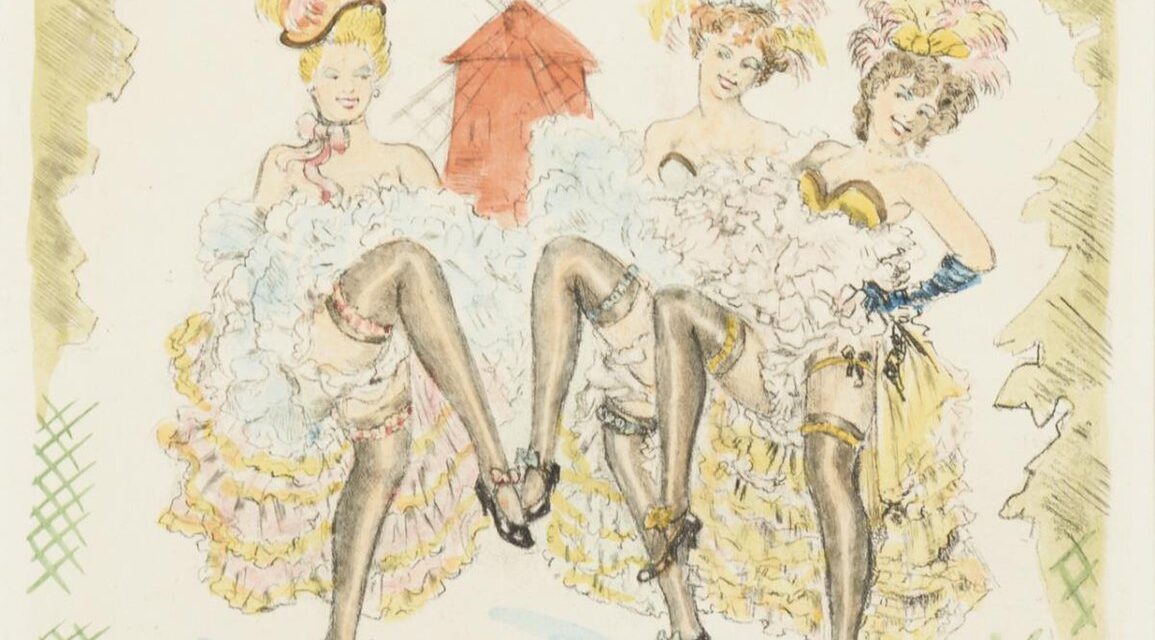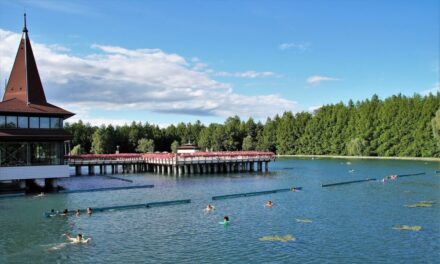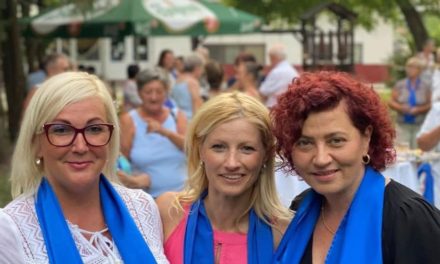Prostitution was a dangerous and despised profession, yet some people made amazing fortunes from it. Mostly temporarily.
It was a strange and closed world for the luxury prostitutes who lived around the turn of the last century. The fragile flowers of high life were in many ways freer than their female counterparts, but at the same time they carried a heavy stigma. The beautiful apartments they lived in were like a golden cage, the wonderful milieu actually preserved the half-baked social status.
Today, few people know that between 1867 and 1926 prostitution was legal in Budapest, where the activities of private prostitutes and brothel prostitutes were subject to medical and police permits. Writers of the era also dealt with the phenomenon a lot, the most authentic image is perhaps given by Gyula Krúdy's novel A vörös postaköcsi
It is not necessary to romanticize the situation, prostitution was a dangerous job, it attracted the underworld if a lustful woman acquired a rich patron, and the gentlemen who had intimate dealings with the ladies in the evening might not even say hello to them on the street the next day. Despite this, there were a few luxury courtesans whose lives were at least temporarily brought money and glamor by the men seeking their favors. Let's see where these privileged, yet looked down upon women lived!
1. Magyar utca 20.
Róza Pilisy was not only beautiful, but also a grounded, educated and intelligent woman. She was working in a flower shop on Servita Square, when she met Count Albert Apponyi, who immediately fell in love with her. In addition to showering her with all kinds of worldly goods, the lord also taught his girlfriend. Although they later broke up, Apponyi gave Róza the apartment on Újvilág (now Semmelweis) Street that he had bought for her as a generous parting gift. The lady managed the acquired assets wisely, so she finally bought a house in Magyar utca, where she set up a luxury brothel and made her own home in the most beautiful rooms of the building.
She was not a persistent woman, she acquired her wealth herself after her initial luck, educated ladies in her brothel who spoke foreign languages entertained the gentlemen who signed in under pseudonyms, among whom there were also crown princes. The later VII. King Edward of England, King Milan I of Serbia and Ferenc Ferdinand also visited the brothel. Since the focus here was not on the money of the guests, but on their education, writers also visited the halls with love, Gyula Krúdy, for example, regarded the educated woman as his muse. In the brothel
"there were rooms furnished with civilian comforts. One salon praised the Biedermeier taste, the other talked about the Rococo. In the dining room, there is a wide walnut table and chairs, like in a country mansion, where the furniture left by the grandfathers is valued."
The furnishings of the house were made by Endre Thék, the carpenter who also made the decorations for the St. István Hall of the Budavári Palace.
2. Király Bazar (Ferenciek tere 5.)
Madame Fanny Spitz lived in an elegant apartment on the first floor of the Király Bazaar, and she did not have to walk far to work, as she operated a brothel on Cukor Street. We know relatively little about the lady's life, her figure has been preserved by a colorful scene in Pest. A law student fell madly in love with one of her "daughters", so much so that he asked her to marry him. The half-world lady said yes, on the condition that the young man in love asked the madame, who was none other than Fanny Spitz. This happened according to its order and manner, the young man standing on his knees in front of the King's Bazaar asked for the hand of his chosen one from Fanny Spitz, who sobbed with emotion and said yes in the circle of passers-by who were also touched.
3. György-villa (Nagytétenyi út 198–202)
There is a mysterious building on the border of Budatétény. The wonderful classicist villa seems to have been teleported straight from Svábhegy, and exudes a simple and elegant atmosphere. It was built in 1827, and then changed owners several times, so it was bought by György Dőry, the wealthy wine merchant, who completely rebuilt the house standing here. This is how the charming building, evoking the atmosphere of English girls' novels, was created, which can be found right next to the Budatetényi Rózsakert. The inside of the villa is also very pleasant, you can still see the large wine cellar, heir to the viticulture traditions of the area, which includes elegant interior spaces on the upper floors. Although we don't know much about Dőry, it is certain that he was a real gavaller, since the renovation was necessary so that he could present the pretty building to his "girlfriend" on Christmas 1867.
4. Fő utca 76.
Emília Turcsányi got the nickname Elza Magnás because she favored only the richest gentlemen. The former poor maid became the lover of rich furniture manufacturer Miksa Schmidt, 20 years older than her, who forced her love to play bizarre games, for example, the girl had to receive him while lying in a coffin in a white dress. In return, he spent 150,000 crowns a year (the income of a small estate) on Elzá, gifted her with jewelry, such as a 20,000 crown string of pearls and 30,000 brilliant earrings, and even taught her. In addition, he rented a small, three-room apartment furnished with aristocratic elegance at 46 Margit rakpart (now around 76 Fő utca). However, the relationship was ended by a terrible tragedy, because in 1914 Elza Mágnás was the victim of a brutal murder, her chambermaid and her lover were killed for profit, and her body was hidden in a travel basket.
5. Jókai Street 10.
"Whoever writes the history of Budapest can write a lot about Károly Somossy and Carola Cecília. They are the ones who taught the city how to be lazy."
This is what Gyula Krúdy writes The red stagecoach . Cecília, the former star of the Somossy Orfeum (today's Operetta Theatre), conquered not only her fantastic stage appearance, but her lifestyle was also legendary. He dazzled the audience on stage until midnight, then he had dinner, then he sat on the back of the most elegant cart and drove the horses up and down between Andrássy út and Stefánia út. The fun often lasted until dawn, Carola Cecília then had a quick breakfast in the Liget, and then went back to rehearse at the Orfeum.
It can be seen from his schedule that he did not spend much time at home, it is no coincidence that he lived in quite middle-class conditions, even when one of his knights rented him a luxury apartment, and for a long time he lived at Gyár utca 36 (now Jókai utca 10). His true love was entertainment and jewelry, and he devoted himself to this passion with such enthusiasm that the gavallers bought him 6,000 moons worth of estates. The beautiful woman, for whom several family fortunes were completely transformed into champagne and horse studs, became the wife of an opera singer from Dresden after her splendor in Pest and ran a boarding house for years. When Sári Fedák later visited the living legend, he described her as a quiet old woman, who also objected to the mention of the Orpheum.
6. Haris Bazar (Haris köz)
Before Haris köz was established, Haris Bazar stood in its place. Baron Schöllerer rented a smaller two-room apartment in this building for hussar officer Miksa Peschek Verona. Although the part of the apartment that the main tenant, dr. Only one door separated Mór Altmann from it, it was not poor, it was clearly different from the elegant homes we have presented so far. The officer was not the only breadwinner for the girl, who employed her own mother as a housekeeper and also took in her goddaughter. Since his expenses were not fully covered by the hussar captain, he also accepted money from other visitors for his services. One of them killed him after a financial dispute. Among the many shocking elements of the story, it is one of the saddest, as Miksa Schöllerer emphasized that he never made serious plans with the victim, he never wanted to marry her.
Featured image: Wikimedia












